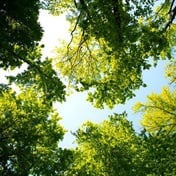Amid the highest recorded pollen counts in history, Health24 will be bringing you exclusive pollen count updates courtesy of the UCT Lung Institute's Allergy and Immunology Unit.
Here are the major city updates for 5 March:
Cape Town (Western Cape)
This week’s assessment is modelled on 10 years of archived readings. Grass counts are low at this time of year as are trees and weeds. Tree types include bayberry, eucalyptus and olive. Weeds detected are typically the daisy family, goosefoot and dandelion. Moulds are low.
Count: 5 (low) [Last week: 5 (low)]
Johannesburg (Gauteng)
Grass concentrations increased throughout this sampling week occurring >10g/m3/day. Trees were very low and included the types: cypress, pinus and eucalyptus.
Weeds were similarly very low and only Chenopodiaceace (Goosefoot) and Asteraceae were detected. Moulds were the highest occurring aerospora and included aspergillus/penicillium, cladosporium, ascospores, and Alternaria.
Count: 39 (high) [Last week: 20 (high)]
Pretoria (Gauteng)
Grass concentrations were moderate to high throughout the week again occurring >10g/m3/day. Trees were low and included the types: eucalyptus, cypress and pinus.
Low weed concentrations included: Chenopodiaceace (Goosefoot) Moulds were the highest occurring palynomorphs and included aspergillus/penicillium, cladosporium, alternaria, and ascospores.
Count: 25 (high) [Last week: 32 (high)]
Bloemfontein (Orange Free State)
The daily grass levels were high to very high. Tree levels were low and included white stinkwood, Buddleja, and cypress. Weed levels were similarly low as English plantain, the daisy family and goosefoot were detected in low quantities. Moulds were generally low but the fungal spore Alternaria increased and Alternaria levels were high.
Count: 104 (very high) [Last week: 129 (very high)]
Kimberley (Northern Cape)
Grass levels were high on each day of this sampling week. Tree levels were low and included cypress and olive. Weed levels were similarly low and included the daisy family, goosefoot and ragweed. Mould levels were low overall, but significant levels were seen for most days of the week for Alternaria.
Count: 79 (very high) [Last week: 57 (very high)]
Durban (KZN)
Durban: Grass levels were moderate, and have dropped since last week. Tree loads were substantially lower relative to the previous week, with birch and eucalyptus detected. Weed levels were low, and including low counts of ragweed.
Count: 13 (moderate) [Last week: 40 high)]
Port Elizabeth (Eastern Cape)
The report is repeated from last week as the spore trap motor failed and a new motor was sourced and fitted during this sampling week. The spore trap is running again and direct counts will be reported again from next week.
Count: 1 (very low) [Last week: 1 (very low)
See the full report HERE.
Reference ranges:
Overall, Trees, Grasses and Weeds all use the same values (grains per cubic metres of air)
Overall count is the daily average of pollen grains per cubic metres of air (trees plus grasses plus weeds).
In partnership with the the UCT Lung Institute's Allergy and Immunology Unit.
As the pollen problem worsens, precise and expanded monitoring becomes even more essential. And here's how you can help.
Image: iStock




 Publications
Publications
 Partners
Partners















